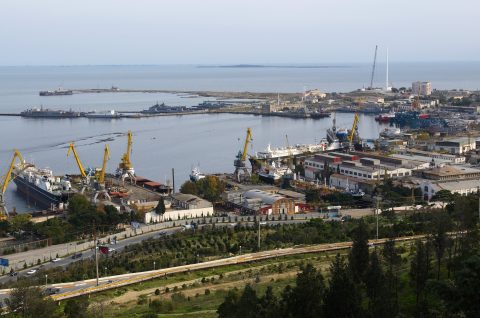RFI: Maritime Silk Road should push Italian shift to rail

Italy is investing in its ports and railway infrastructure in order to become a true European gateway on the Maritime Silk Road. Maurizio Gentile, CEO of Italy’s infrastructure manager Italian Rail Network (RFI) outlined the plans at UIC’s Global Rail Freight Conference, held in Genoa last week. “The Maritime Silk Road represents a special point of interest for Italy.”
The Maritime Silk Road (MSR) is the maritime complement to the New Silk Road, which focuses on rail infrastructure connecting Europe and Asia. Together these initiatives form the Belt and Road initiative (BRI). The maritime route connects important ports in south-east Asia with European ports as Athens in Greece and Venice in Italy, via the Suez Canal. In order to serve as a gateway, Italy must invest in its railway network as well as its rail facilities at core network ports, Gentile said.
Modal shift
His view was echoed by Paolo Costa, an advisor for the Organization for Economic Cooperation and Development last week. “Objectively speaking, we are the ideal access point (for the BRI into Europe), the one that would achieve the lowest costs for everyone involved,” he said. “This means not so much building things, but building an overall capacity to exploit the entire logistical chain, from departure to arrival”, he was quoted as saying in Chinese media outlet XinhuaNet.
“The MSR represents great potential for shifting traffic from road to rail”, Gentile continued. “Goods arriving in Italy from China via sea are currently mainly forwarded by road. In 2015, rail transport of freight represented a 5 per cent share, while road accounted for 37 per cent of all freight traffic in Italy. The dominant modality in Italy, sea transport, accounted for 58 per cent, however maritime freight transport does not compete with rail but rather complements it”, he noted.
Projects till 2026
“In order to generate a modal shift to rail, Italy must make intermodal transport more competitive, by addressing bottlenecks at transhipment points”, Gentile said at the UIC conference. He pointed out that currently nine out of fourteen core network ports are connected to the Italian railway network. Napels will be added in 2026, the remaining four still need to be connected.
Similarly, transhipment points must be upgraded to handle a growing number of volumes. Currently, eight transhipment facilities linking the railway network to core network ports have been identified to be upgraded over the next eight years. In the same period, 17 transhipment stations connecting the railway network to main terminals and shunting yards will be enhanced, Gentile explained.
Rail interoperability
Rail interoperability is also high on the agenda of the south European country, RFI’s topman pointed out. He referred to core network parameters such as axle load, gauge, train length and ERTMS. In all these aspects, Italy is upgrading its network, with the goal to adhere to the TEN-T standards on most of its network in 2026. By that time, Italy wants to have implemented ERTMS on 75 per cent of the network, facilitate 740 metre trains on 83 per cent, facilitate 22,5 tonne axle load on 91 per cent and provide standard 1435 milimetre gauge on 82 per cent.
The populist Italian Five Star Movement has long opposed large-scale public infrastructural projects, but now seems to be positive towards the potential of the BRI. Italian Infrastructure and Transport Minister Danilo Toninelli last week called the BRI “a challenge on the planetary level, a frontier in which Italy can and must play a leading, frontline role in many opportunities to come. We must be ready, and the only way to do this is to take actions to overcome our infrastructural and logistical shortcomings, beginning with our ports,” he was cited in XinhuaNet.





